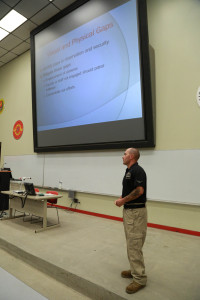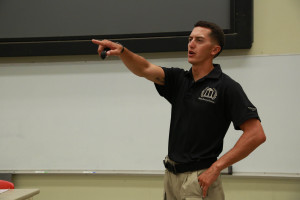Observation | Human Dimensions | S.T.A.R.
Observation
1. Conduct Observation
Observation Methodology –Observation, acquisition, and recording of specific information that is relevant to the perception of details regarding persons, objects, places, and events.
2. Establish a Baseline
Baseline – Looking at the current situation, understanding the context and relevance of what’s being observed. Measuring what is normal against what is not normal
3. Identify Anomalies
• Anomalies – observation that rises above or fall below the baseline
4. Identify Anchor Points
• Anchor Points – place where a person returns to regularity (desk, group clicks, teacher’s lounge, etc.)
5. Identify Habitual Areas
• Habitual Areas – Identifying areas where specific groups of people are frequent.
Human Dimensions
B. Human Dimensions
1. Apply the Five Human Dimensions
- Kinesics – interpretation of body movement, gestures, grooming habits, and the body positioning in space.
- Biometric Cues – interpretation of physiological reaction (instinctive reactions to stimulants). Understanding these indicators will warn of intent.
- Proxemics – Interpretation of spatial relationships with the context of cultural normalcy’s.
- Atmospherics – Interpretation of the environmental baseline through the 5 senses and intuitions.
- Geographics – Interpretation of the relationship between people and their surroundings.
2. Apply Coopers Color Code
- White – Relaxed and unaware of what’s going on around you.
- Yellow – Relaxed and aware of what’s going on around you.
- Orange – Identified and focused on something of interest that may or may not be a threat
- Red – Attention from a potential threat to a potential target.
- Black – Completely immobilized with panic and fear.
S.T.A.R.
C. Stop | Think |Act |Reassess |(S.T.A.R.)
1. Apply S.T.A.R.
- Stop – Short pause for a developing potential threatening situation.
- Think – Develop a plan to deal with situation.
- Act – Execution of a plan.
- Reassess – Looking for the next potential threatening situation.



